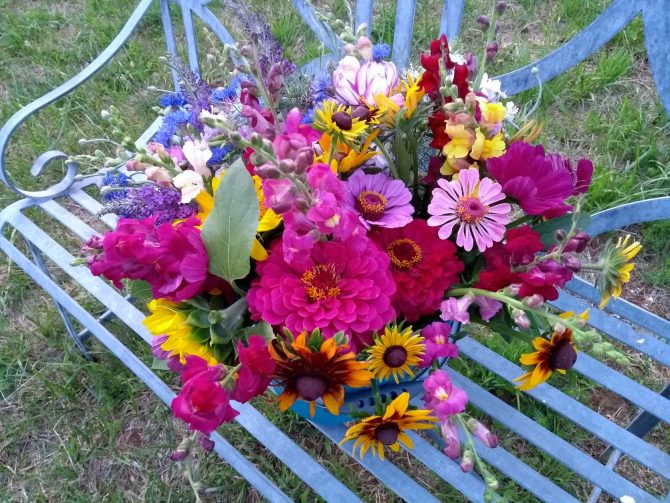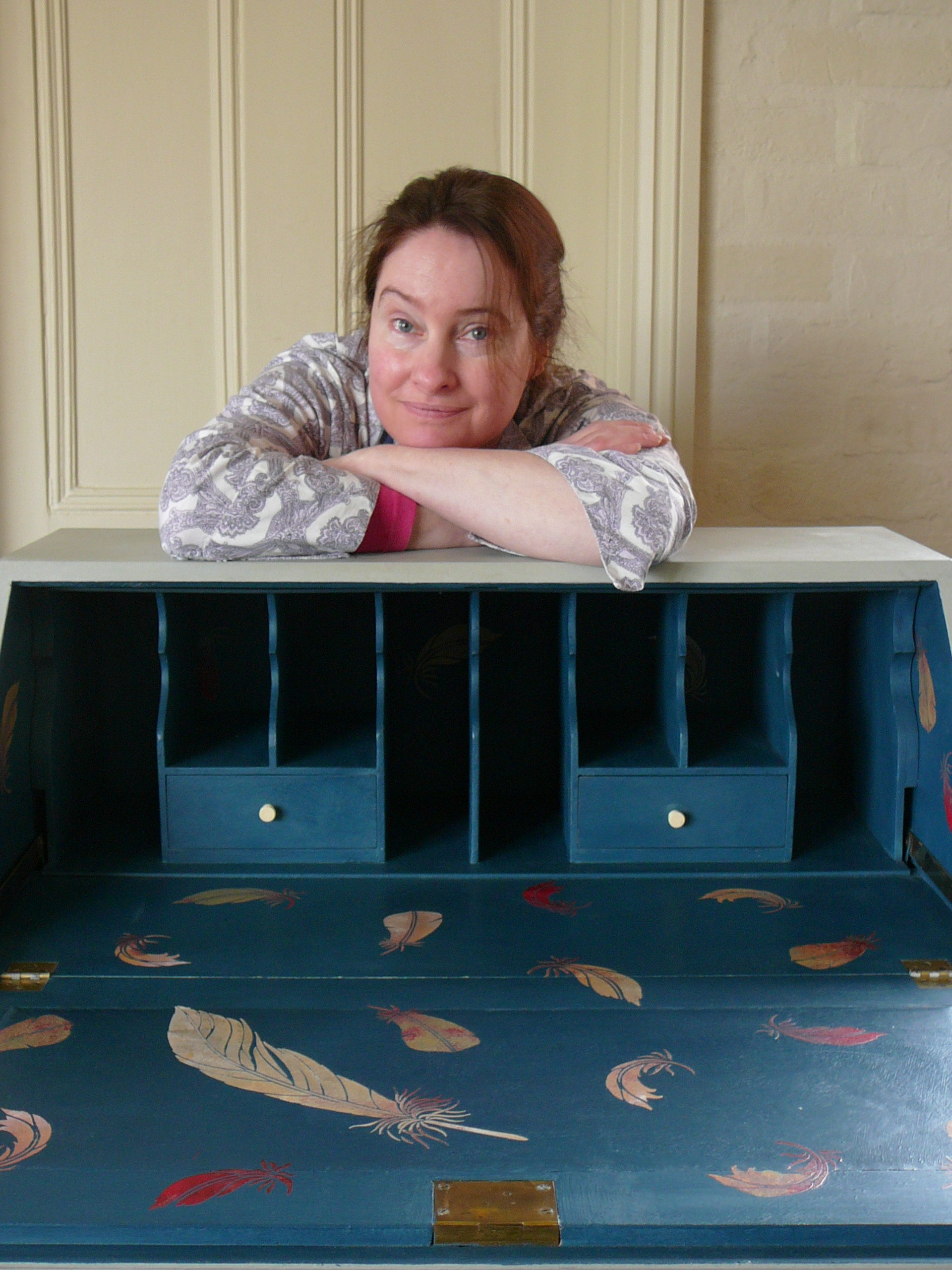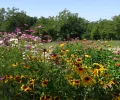My Hot and Bothered Flower Farm in the Dordogne
Real life stories
FE contributor Charlotte Visser always dreamt of starting a flower farm. After moving to the Dordogne in 2020 in the middle of the pandemic, she now faced the challenge of realising her horticultural dreams through the heatwaves of one of France’s hottest summers.
My Hot and Bothered Flower Farm
The stove is lit for the first time this evening and the nights are drawing in. My work on the flower farm is by no means done, but it can be done at greater leisure. I can even find the time to write about it.
Starting a flower farm has been a long-held dream of mine. In the UK, I had a vintage shop where I sold locally-grown bunches of garden flowers on Saturdays. Bucketloads of foxgloves, delphiniums and blue-buttoned cornflowers would arrive and take my breath away (these were provided by the ultra-talented Hayley Moreland of Hotchpotch Organics). I would arrange them in and around the boot of my 1969 Morris Minor. A wicker picnic basket and Welsh blanket would complete the display. Flower-farming has become very popular in both the UK and the USA and nowadays you can find locally produced flowers in most farm shops. That was in Worcestershire, mind; this is the Perigord.
In France, the fashion is for formal arrangements and these come at an astronomical cost. The flowers have been produced in hothouses faraway. I don’t have a greenhouse or a polytunnel. I use electricity only to pump water and the only horticultural plastics around are plant pots and seed trays. And hosepipes. All flowers are strictly seasonal and I have brewed my own malodorous fertilizer from nettles and comfrey. The flipside of finding a niche in the market is to try to persuade customers to change their preferences to a more natural look. One florist I approached asked me to list a price per stem, but another ordered my free-style mixed bunches as they come.
The work has been back-breaking. I chose my spot carefully, opting for a thick layer of clay soil and a well that turned out to be a rainwater reservoir. A few hundred metres south, you can strike ‘causse,’ a thirsty layer of small sharp stones. There appeared to be no substitute for double-digging by hand, even though we enlisted help from a rotavator and a very cute vintage tractor. My Achilles tendons coarsened and knotted as I mounted my spading fork and wiggled it into the red soil.
Heatwaves and thunderstorms
It’s been quite a year to start a brand new flower project. Nothing could have prepared me for the extreme conditions in the Perigord. Perhaps I was lured by the very cool and wet summer of 2021, followed by two months of perma-frost around Christmas. All this cool weather came to an abrupt end at the time known as the frost-free date, 15th May. From that day, the outside turned into a furnace and we spent the afternoons indoors with the windows and shutters bolted. At least, it was very jolly to have some flowers on the kitchen table.
In June, the day arrived when my first flowers were ready to go to market. It’s best to pick in the cool of evening, when the stems are full of sugar. I waited for the temperature to drop, and waited, but it lingered at 34 degrees until dark. Throughout the summer, most of the work had to be done in the early hours of the morning, including deliveries. Late-night watering meant that I became utterly unsociable, unable to partake in an apéro or dinner with holiday-makers.
Dry thunderstorms failed to break the heat and stopped coming altogether. The most depressing day of the summer was when grey clouds gathered on the horizon and enshrouded us with ashes from the forest fires around Bordeaux. The sickening fumes shut out the sun and kept us indoors. Who is to say what next year will bring? Global warming is a stark reality. Temperatures in the Dordogne have frequently risen to 10 degrees hotter than the average this summer and watering became prohibited in August. The floral season was very short and disease set in.
A blossoming business
Zinnias have been the star performers this year and are still going strong with their dahlia-like blooms in colours that seem to evolve with the season. I can’t bear to pull them up after months of loyal service. Elsewhere, I have been planting perennials that I hope will cope well with the heat; globe thistles, eryngium and yarrow. For the early summer, I have Canterbury bells and foxgloves.
For me, the appeal of flower farming is its creativity, from ordering seeds to producing beautiful hand-tied bouquets. I love bringing a smile to peoples’ faces, just as Hayley’s flowers brought me delight all those years ago. This year, apart from experience, I have gained a portfolio of colourful photographs and made some sales. Next year, I hope to start selling flowers in May and I should have double the quantity and variety of this year’s harvest. I will also be able to welcome my first guests at the farm through AirBnB. I am looking forward to sharing the beauty of this place and hope that there will be a place for fresh and simple flowers in our troubled world.
For now, I’ll grab my knitting and fall asleep in front of the fire.
Follow Charlotte’s flower garden on her website and Facebook page. You can also find her AirBnb here.

Share to: Facebook Twitter LinkedIn Email
Leave a reply
Your email address will not be published. Required fields are marked *









